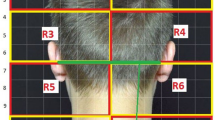Abstract
Occipital nerve stimulation may be effective in treating chronic migraine. Six studies, including three double-blind studies, were performed, with five showing evidence of benefit. However, of the three randomized, controlled trials, none has met a primary endpoint successfully. A separate study suggested a benefit for combined supraorbital and greater occipital nerve stimulation.

Similar content being viewed by others
References
Papers of particular interest, published recently, have been highlighted as: • Of importance •• Of major importance
Bigal ME, Serrano D, Reed M, et al. Chronic migraine in the population: burden, diagnosis, and satisfaction with treatment. Neurology. 2008;71:559–66.
Natoli JL, Manack A, Dean B, et al. Global prevalence of chronic migraine: a systematic review. Cephalalgia. 2010;30:599–609.
Headache Classification Committee. The International Classification of Headache Disorders, 2nd Edition. Cephalalgia. 2004;24:1–160.
Bigal ME, Rapoport AM, Lipton RB, et al. Assessment of migraine disability using the Migraine Disabiilty Assessment (MIDAS) Questionnaire: a comparison of chronic migraine with episodic migraine. Headache. 2003;43:336–42.
Munakata J, Hazard E, Serrano D, et al. Economic burden of transformed migraine: results from the American Migraine Prevalence and Prevention (AMPP) Study. Headache. 2009;49:498–508.
Blumenfeld AM, Varon SF, Wilcox TK, et al. Disability, HRQoL and resource use among chronic and episodic migraineurs: results from the International Burden of Migraine Study (IBMS). Cephalalgia. 2011;31:301–15.
Meletiche DM, Lofland JH, Young WB. Quality of life differences between patients with episodic and transformed migraine. Headache. 2001;41:573–8.
Popeney CA, Alo KM. Peripheral neurostimulation for the treatment of chronic, disabling transformed migraine. Headache. 2003;43:369–75.
Oh MY, Ortega J, Bellotte JB, et al. Peripheral nerve stimulation for the treatment of occipital neuralgia and transformed migraine using a c1-2-3 subcutaneous paddle style electrode: a technical report. Neuromodulation. 2004;7:103–12.
Schwedt TJ, Dodick DW, Hentz J, et al. Occipital nerve stimulation for chronic headache–long-term safety and efficacy. Cephalalgia. 2007;27:153–7.
Reed KL, Black SB, Banta CJ, et al. Combined occipital and supraorbital neurostimulation for the treatment of chronic migraine headaches: initial experience. Cephalalgia. 2010;30:260–71. Study examines combined occipital and supraorbital nerve stimulation. Combined stimulation was substantially more effective than previous reports for ONS alone.
Lipton RB, Goadsby PJ, Cady RK, et al. PRISM study: occipital nerve stimulation for treatment-refractory migraine. Cephalalgia. 2009;29:30-Abstract PO47. The third sham-controlled trial. Results were negative and only the abstract was reported
Saper JR, Dodick DW, Silberstein SD, et al. Occipital nerve stimulation for the treatment of intractable chronic migraine headache: ONSTIM feasibility study. Cephalalgia. 2011;31:271–85. Double-blind, sham-controlled trial to explore various endpoints. Occipital nerve block responders were excluded, but implanted.
Silberstein SD, Dodick D, Saper J, et al. Safety and efficacy of peripheral nerve stimulation of the occipital nerves for the management of chronic migraine: results from a randomized, multicenter, double-blind, controlled study. Cephalalgia. 2012;32:1165–79. Large, double-blind, controlled study. The primary endpoint of 50 % improvement in average VAS score proved negative. A 30 % improvement would have proved positive.
Diener HC, Schorn CF, Bingel U, et al. The importance of placebo in headache research. Cephalalgia. 2008;28:1003–11.
Serra G, Marchioretto F. Occipital nerve stimulation for chronic migraine: a randomized trial. Pain Physician. 2012;15:245–53.
Anthony M. Headache and the greater occipital nerve. Clin Neurol Neurosurg. 1992;94:297–301.
Austad EA. Can proximity of the occipital artery to the greater occipital nerve act as a cause of idiopathic greater occipital nerualgia? An anatomical and histological evaluation of the artery-nerve relationship. Plastic Reconstructive Surg. 2007;119:2035–6.
Weiner RL, Reed KL. Peripheral neurostimulation for control of intractable occipital neuralgia. Neuromodulation. 1999;2:217–21.
Matharu MS, Bartsch T, Ward N, et al. Central neuromodulation in chronic migraine patients with suboccipital stimulators: a PET study. Brain. 2004;127:220–30.
Vadivelu S, Bolognese P, Milhorat TH, et al. Occipital nerve stimulation for refractory headache in the Chiari malformation population. Neurosurgery. 2012;70:1430–6.
Bartsch T, Goadsby PJ. Increased responses in trigeminocervical nociceptive neurons to cervical input after stimulation of the dura mater. Brain. 2003;126:1801–13.
Wall PD. The gate control theory of pain mechanisms. A re-examination and re-statement. Brain. 1978;101:1–18.
Oshinsky ML, Hirata H, Poletto C, et al. Dural sensitization is suppressed by occipital nerve stimulation. 701.07/RR2. Neuroscience Meeting Planner. Washington, DC: Society for Neuroscience; 2011.
Stiller CO, Linderoth B, O'Connor WT, et al. Repeated spinal cord stimulation decreases the extracellular level of gamma-aminobutyric acid in the periaqueductal gray matter of freely moving rats. Brain Res. 1995;699:231–41.
Lambru G, Matharu MS. Occipital nerve stimulation in primary headache syndromes. Ther Adv Neurol Disord. 2012;5:57–67. A well-written review of ONS in not just CM, but cluster headache, hemicrania continua, and Short-lasting Unilateral Neuralgiform headache attacks with Conjunctival injection and Tearing (SUNCT) and Short-lasting Unilateral Neuralgiform headache Attacks with cranial autonomic features (SUNA).
Compliance with Ethics Guidelines
Conflict of Interest
Dr. William B. Young declares no potential conflicts of interest relevant to this article.
Human and Animal Rights and Informed Consent
This article does not contain any studies with human or animal subjects performed by any of the authors.
Author information
Authors and Affiliations
Corresponding author
Additional information
This article is part of the Topical Collection on Chronic Daily Headache
Rights and permissions
About this article
Cite this article
Young, W.B. Occipital Nerve Stimulation for Chronic Migraine. Curr Pain Headache Rep 18, 396 (2014). https://doi.org/10.1007/s11916-013-0396-x
Published:
DOI: https://doi.org/10.1007/s11916-013-0396-x




